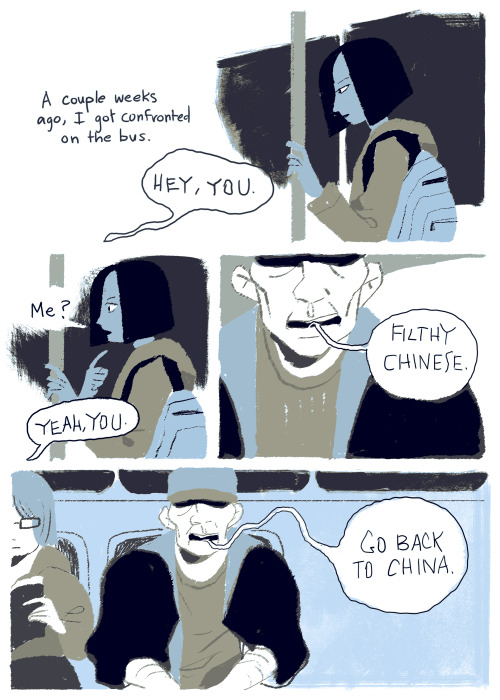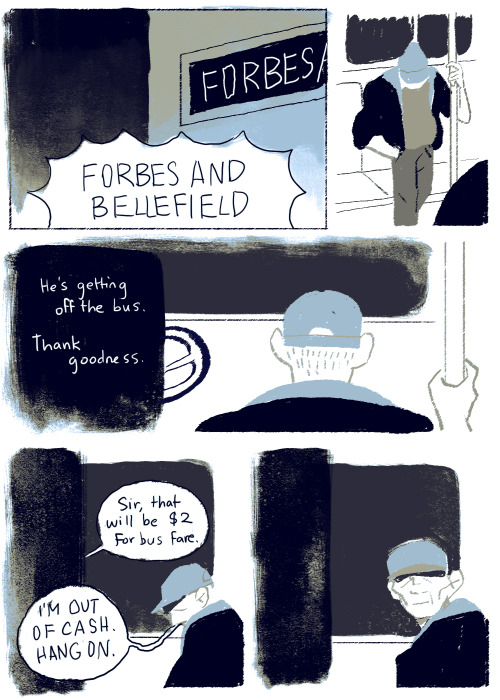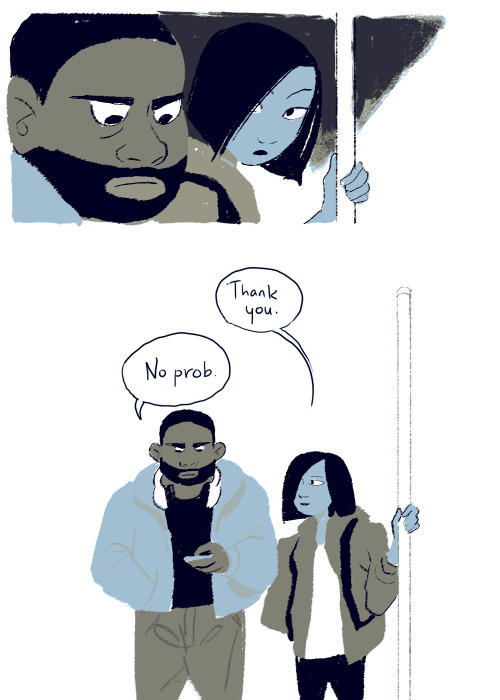“Before A Scene, She Would Be Muttering Deprecations Under Her Breath And Making Small Moans. According


“Before a scene, she would be muttering deprecations under her breath and making small moans. According to Vivien, the situation was stupid, the dialogue was silly, nobody could possibly believe the whole scene. And then…she would walk into the scene and do such a magnificent job that everybody on the set would be cheering.” -David O. Selznick
More Posts from Smparticle2 and Others

Grading a slew of mediocre final papers, the grad student watches his months of arduous teaching bear little fruit.
Flowers








My Neighbor Totoro | Tonari no Totoro (1988, Japan)
Director: Hayao Miyazaki Cinematographer: Mark Henley

“She has autonomy. She has a strong will. But she can’t move. So in many ways her life is my life. It’s bigger than me, it controls me, and it makes me fight like never before. We spend so much time together that she’s a part of me. She knows how important she is to me. She had childhood cancer. Her heart failed three times. And I was by her side the entire time. I never realized that I could love someone as much as this. She could never hurt me. She could never hurt anyone. We always ask her: ‘Are you angry?’, ‘Are you mad?’ And she always says ‘no.’ She laughs when I laugh. And right now I’m trying not to cry. Because she’ll cry if I cry.” (São Paulo, Brazil)













First and last appearances.

Earlier this year, The Lutetium Project explored how microfluidic circuits are made, and now they are back with the conclusion of their microfluidic adventures. This video explores how microfluidic chips are used and how microscale fluid dynamics relates to other topics in the field. Because these techniques allow researchers very fine control over droplets, there are many chemical and biological possibilities for microfluidic experiments, some of which are shown in the video. Microfluidics in medicine are also already more common than you may think. For example, test strips used by diabetic patients to measure their blood glucose levels are microfluidic circuits! (Video and image credit: The Lutetium Project; submitted by Guillaume D.)








Self-assembling particles brighten future of LED lighting
Just when lighting aficionados were in a dark place, LEDs came to the rescue. Over the past decade, LED technologies – short for light-emitting diode – have swept the lighting industry by offering features such as durability, efficiency and long life.
Now, Princeton engineering researchers have illuminated another path forward for LED technologies by refining the manufacturing of light sources made with crystalline substances known as perovskites, a more efficient and potentially lower-cost alternative to materials used in LEDs found on store shelves.
The researchers developed a technique in which nanoscale perovskite particles self-assemble to produce more efficient, stable and durable perovskite-based LEDs. The advance, reported January 16 in Nature Photonics, could speed the use of perovskite technologies in commercial applications such as lighting, lasers and television and computer screens.
“The performance of perovskites in solar cells has really taken off in recent years, and they have properties that give them a lot of promise for LEDs, but the inability to create uniform and bright nanoparticle perovskite films has limited their potential,” said Barry Rand an assistant professor of electrical engineering and the Andlinger Center for Energy and the Environment at Princeton.
Read more.






It’s been an emotional week. I wanted to share this encounter I had with a very hateful man on the Pittsburgh bus because it reminds me that there are brave people in this world. Let’s all do everything we can to stand up for each other.




Snowflakes from William Scoresby’s des Jüngern Tagebuch einer reise auf den Wallfischfang, (Hamburg: F. Perthes, 1825), the German translation of Journal of a voyage to the northern whale-fishery.
Scoresby was an Arctic explorer with interests in meteorology and navigation, who led an Arctic exploration in the early 1800s to the area around Greenland.
-
 marnigifshistory liked this · 9 months ago
marnigifshistory liked this · 9 months ago -
 victorie-etoile reblogged this · 1 year ago
victorie-etoile reblogged this · 1 year ago -
 victorie-etoile liked this · 1 year ago
victorie-etoile liked this · 1 year ago -
 morpheusrising reblogged this · 2 years ago
morpheusrising reblogged this · 2 years ago -
 ser-stark liked this · 2 years ago
ser-stark liked this · 2 years ago -
 bigbadboopy liked this · 2 years ago
bigbadboopy liked this · 2 years ago -
 debdarkpetal reblogged this · 2 years ago
debdarkpetal reblogged this · 2 years ago -
 debdarkpetal liked this · 2 years ago
debdarkpetal liked this · 2 years ago -
 vivhartley liked this · 2 years ago
vivhartley liked this · 2 years ago -
 lecter-nexus reblogged this · 2 years ago
lecter-nexus reblogged this · 2 years ago -
 lecter-nexus liked this · 2 years ago
lecter-nexus liked this · 2 years ago -
 nesillz94 liked this · 2 years ago
nesillz94 liked this · 2 years ago -
 theladyalicenthightower liked this · 2 years ago
theladyalicenthightower liked this · 2 years ago -
 whatifirebloggedallmylikes reblogged this · 2 years ago
whatifirebloggedallmylikes reblogged this · 2 years ago -
 itgirl424 reblogged this · 2 years ago
itgirl424 reblogged this · 2 years ago -
 anynameisbetterthanmyfirstone liked this · 3 years ago
anynameisbetterthanmyfirstone liked this · 3 years ago -
 linapavlina liked this · 3 years ago
linapavlina liked this · 3 years ago -
 bisexualasskicker reblogged this · 3 years ago
bisexualasskicker reblogged this · 3 years ago -
 mrmarstumtum reblogged this · 3 years ago
mrmarstumtum reblogged this · 3 years ago -
 mrmarstumtum liked this · 3 years ago
mrmarstumtum liked this · 3 years ago -
 virginlibertine reblogged this · 3 years ago
virginlibertine reblogged this · 3 years ago -
 virginlibertine liked this · 3 years ago
virginlibertine liked this · 3 years ago -
 keengiantangelflower liked this · 3 years ago
keengiantangelflower liked this · 3 years ago -
 natashawood liked this · 3 years ago
natashawood liked this · 3 years ago -
 myrnaloysnose liked this · 3 years ago
myrnaloysnose liked this · 3 years ago -
 coldhollywoodsociologyathlete liked this · 3 years ago
coldhollywoodsociologyathlete liked this · 3 years ago -
 zacharyalllen reblogged this · 4 years ago
zacharyalllen reblogged this · 4 years ago -
 sharinganfromhell liked this · 4 years ago
sharinganfromhell liked this · 4 years ago -
 mzperx0506universe liked this · 4 years ago
mzperx0506universe liked this · 4 years ago -
 toldi1846 reblogged this · 4 years ago
toldi1846 reblogged this · 4 years ago -
 madebypain liked this · 4 years ago
madebypain liked this · 4 years ago -
 keluna liked this · 4 years ago
keluna liked this · 4 years ago -
 princessjune liked this · 5 years ago
princessjune liked this · 5 years ago -
 jaejoongtic liked this · 5 years ago
jaejoongtic liked this · 5 years ago -
 ourburningpassion liked this · 5 years ago
ourburningpassion liked this · 5 years ago -
 missg0tham liked this · 5 years ago
missg0tham liked this · 5 years ago -
 waitingforhogwarts reblogged this · 5 years ago
waitingforhogwarts reblogged this · 5 years ago -
 waitingforhogwarts liked this · 5 years ago
waitingforhogwarts liked this · 5 years ago -
 themoonstarchild reblogged this · 5 years ago
themoonstarchild reblogged this · 5 years ago